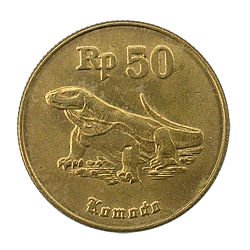who found Komodo Island?

Image: Wikipedia
Komodo Island was officially documented by Lieutenant van Steyn van Hensbroek, a Dutch colonial official, in 1910. He was one of the first Western explorers to visit the island and report on the existence of the Komodo dragon, the world's largest lizard, which is native to the island. Van Hensbroek's discovery brought international attention to the unique wildlife of the island, and it eventually led to the establishment of conservation efforts and the declaration of Komodo Island as a national park.

Lieutenant van Steyn van Hensbroek
Image: Wikipedia
History of Komodo Island
Komodo Island is located in Indonesia and is famous for its unique Komodo dragons, the world's largest lizards. The island's history dates back to prehistoric times when these reptiles roamed freely. Here's a brief overview:
Early Inhabitants: Komodo Island and the surrounding region have a history of human habitation dating back thousands of years. Indigenous communities likely lived on the island, coexisting with the Komodo dragons.
European Discovery: The Western world learned of the Komodo dragons in the early 20th century when European explorers, including the Dutch, began to visit the island. In 1910, Lieutenant van Steyn van Hensbroek officially documented the existence of Komodo dragons.
Conservation Efforts: As awareness of the Komodo dragons grew, conservation efforts began. Komodo Island and the surrounding areas were declared a national park in 1980, and later designated as a UNESCO World Heritage Site in 1991.
Community Involvement: The local communities around Komodo Island, primarily on Flores Island, have played an important role in the conservation of the Komodo dragons. They have worked as guides, park rangers, and have been involved in eco-tourism initiatives, benefiting both the environment and their livelihoods.
Challenges: The conservation of Komodo dragons faces challenges such as habitat loss, poaching, and human-wildlife conflicts. Balancing the needs of the local communities and the protection of this unique species remains an ongoing challenge.
In recent years, there has been a shift towards sustainable tourism in the region, with a focus on educating visitors about the importance of conservation. Community involvement in these efforts has been crucial to ensure the survival of the Komodo dragons and the long-term sustainability of the region's ecosystem.
You've got a free upvote from witness fuli.
Peace & Love!
Thank you very much